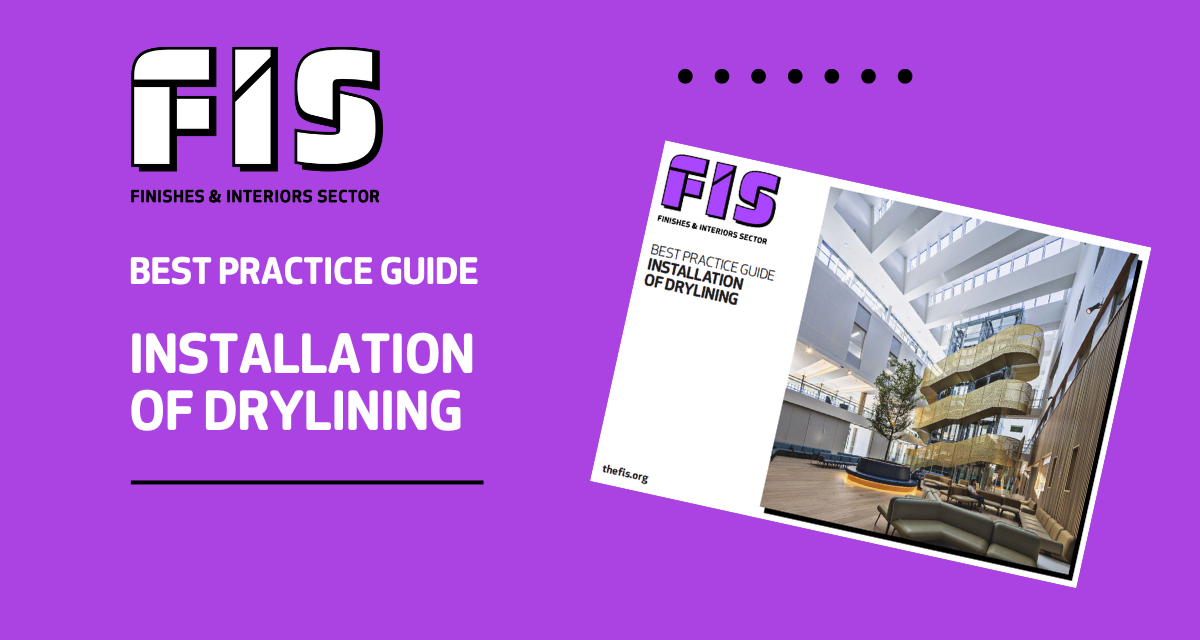The Finishes and Interiors Sector (FIS) has launched a revised and updated Best Practice Guide – Installation of Drylining to help promote best practice in the installation of drylining, and to take account of new working practices, the Building Safety Act and sustainability.
First published in 2015 and updated in 2018, this revised guide is an invaluable aid to specifiers, contractors, clients and installers. This publication will guide them through the design and installation of internal, non-loadbearing drylining constructions using gypsum plasterboard on rigid metal framework. It also includes descriptions of other non-plasterboard, such as calcium silicate board, which are also used in drylined systems. This guide includes drylined partitions, linings and passive fire protection.
Split into sections, the revised guide covers everything from the initial tendering and planning stages through to the eventual installation. It offers a series of points to consider when carrying out the installation of all types of drywall and provides updated and revised information including:
- Top 10 risks to avoid when procuring and installing fire resistant drylining
- Updated advice on contract conditions
- Removal of references to BS 8212 due to withdrawal
- Coverage of changes to BS 8000-8: 2023
- Detailing the differences between skimming vs. taping and jointing
- Updated advice on sustainability
The guide sits alongside other FIS Best Practice Guides that relate to drylining:
- Specifiers Guide to Drylining
- Pre-construction Site Guide to Drylining
- Construction Site Guide to Drylining
- Other technical notes covering plastering, finishing, safe ingress of plasterboard and others
Commenting on the drylining guides, Iain McIlwee, FIS Chief Executive said: “Drylining systems form firewalls, fire escape routes and provide passive internal fire protection so it is incredibly important to get it right at all stages of installation and this has to start far earlier and long before boots hit the ground. Our new and updated guides allow professionals to reduce risks, support compliance and most importantly of all encourage responsible planning.”
A valuable resource for improving works package delivery, these guides work well when they are included in proposals and project plans to demonstrate how to best approach a project.
You can download the Best Practice Guide – Installation of Drylining here.


